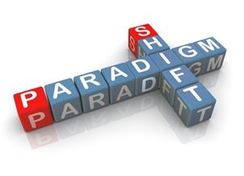 But seriously, if you look around in the physical asset management field, a paradigm shift is desperately needed. In my last post, I mentioned that it is required for a successful execution of HPAM. It is required to ensure the activities/practices/business approaches of the organization are well coordinated and integrated. By definition "paradigm shift" means "a fundamental change in approach or underlying assumptions". I agree that the word "paradigm" has been a corporate buzz word for many years, but in its simplest form it means "doing something differently". Paradigm shift has been the catalyst and cornerstone of many inventions, innovations, evolution and progress and has stood the test of time. Doing things differently" has changed the world we live in completely as attested by the following quotes: "Edison's electric light did not come about from the continuous improvement of the candles." Oren Harari "Insanity: doing the same thing over and over again and expecting different results." Albert Einstein In physical asset management too, the choice is ours: Do we want to do the same things over and over again? Do we expect the same results or different results? If it is the latter, then from what we have seen above, we must start doing things differently. In maintenance and reliability in the late 1970s, we witnessed the power of paradigm shift. Significant improvement took place in the aviation industry with the adoption of reliability-centred maintenance approach, which completely changed the maintenance management philosophy. http://reliabilityweb.com/articles/entry/maintenance_management_a_new_paradigm Of course the paradigm shift did not take place overnight. It took many years for other industries to follow suit and to achieve different results, but they all had to do things differently. In physical asset management, we are all expecting different results in the form of better infrastructure, improved service level, longer service life, availability of more funds, economic development, etc. But are we doing things differently enough to achieve those results? Many of the pieces of the puzzle to achieve great results are in place, but we need to start changing a few things in little matters within ourselves, within the organization. We must create a new ideal, a new model with a different pattern. We must look at things through different functional areas' lenses to reframe our thoughts, change our behaviour and get rid of some old ways of thinking. So what are the stumbling blocks that can be experienced for a paradigm shift in HPAM? Here are some examples: Defining value, organizational silos, conflicting priorities, politics, and principal-agent problems. Can you think of any others? I leave you with this short video: https://www.youtube.com/watch?v=zjdFgxx81qk Together let us challenge the way we do things. Only then we will be able to see different results!
12 Comments
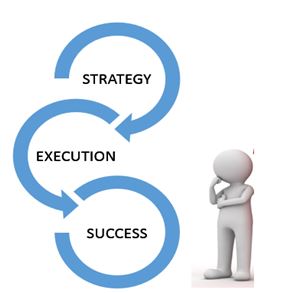 In my previous post I mentioned that Physical Asset Management is the business discipline for managing physical assets over their entire lifecycle to achieve a desired level of service, while minimizing the lifecycle costs within an acceptable level of risk. The definition of asset management has come a long way since it was first formulated by Australian economist Dr. Penny Burns in 1984. At around the same time there has been some significant development in the field of physical asset management across the globe from Australia and New Zealand to the United States of America and through Europe and the United Kingdom. Different approaches, principles, standards and conceptual models were developed to illustrate the breadth and depth of activities required to manage physical assets. The best asset management practices are outlined in the International Infrastructure Management Manual first published in 2000 with input from the public and private sector industry of Australia, New Zealand, United States, South Africa and the United Kingdom. PAS 55 Standard, developed by Institute of Asset Management (IAM) came along in 2004 and defined Physical Asset Management as "the systematic and coordinated activities and practices through which an organization optimally and sustainably manages its assets and asset systems, their associated performance, risks and expenditures over their life cycles for the purpose of achieving its organizational plan". In 2009, the Canadian National Asset Management Working Group of the National Round Table on Sustainable Infrastructure (NRTSI) developed an Asset Management Governance Framework for Canada, which defines asset management as “an integrated business approach involving planning, finance, engineering and operations to effectively manage existing and new infrastructure to maximize benefits, reduce risk and provide satisfactory levels of service to community users in a socially, environmentally and economically sustainable manner”. In 2011, the Global Forum of Maintenance and Asset Management (GFMAM) published the Asset Management Landscape, which include the subjects and fundamentals (39 subjects) that depict the discipline of asset management. In 2014, the International Organization for Standardization (ISO) produced the ISO 55000 series of standards, which defines physical asset management as "the set of coordinated activities that an organization uses to realize value from assets in the delivery of its outcomes or objectives. Realization of value requires the achievement of a balance of costs, risks and benefits, often over different timescales". Why do we have to go through the evolution and above definitions of physical asset management? Well the main objective is to see how successful we have been in implementing physical asset management. STRATEGY + EXECUTION = SUCCESS We all know that strategic thought and planning are very important, but we must recognize that execution of the strategy is the key to achieving success. How well are we executing physical asset management in our organizations? To answer this question I want to highlight two key sets of words in the above quoted definitions:
Let's first look at the activities/practices/business approach. These are the:
Is the “activities/practices/business approach” a sign of successful execution of Physical Asset Management in your organization? What about being “coordinated/integrated”? Is the “activities/practices/business approach” of Physical Asset Management well coordinated and integrated in your organization? For a successful execution of Physical Asset Management or HPAM as I like to call it, your organization may need a Paradigm Shift! 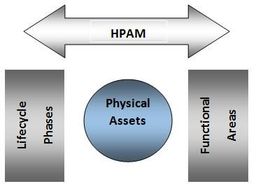 HPAM - Holistic Physical Asset Management means applying the physical asset management discipline with a holistic approach. What does that really mean? We all know that Physical Asset Management is the business discipline for managing physical assets over their entire lifecycle to achieve a desired level of service, while minimizing the lifecycle costs within an acceptable level of risk. In a next post we will elaborate further on this topic. For now let's try to understand what “holistic” means in HPAM. By definition holistic means “characterized by comprehension of the parts of something as intimately interconnected and explicable only by reference to the whole”*. In philosophy, the holistic principle emphasizes priority of a whole over its parts. The discipline of managing physical assets over their entire lifecycle (from cradle to grave as it is more commonly described) actually corroborates with the holistic principle. However that argument begs the question of whether the full potential of HPAM is achieved by focusing only on the asset lifecycle. Is the holistic approach only applicable to the physical asset lifecycle? What about the management process of the lifecycle? Shouldn't it be holistic as well? In organizations, physical assets are managed throughout their whole lifecycle by many different functions dealing with different portions of the lifecycle – operations operate, maintenance maintain, project management does the design, etc. How interconnected are these functions when it comes to a holistic approach and what are their priorities with reference to the organization's objectives? On one side we have the physical asset lifecycle requirements and on the other the conflicting priorities of different functional areas of the organization. To successfully fulfill the potential of HPAM will entail aligning and coordinating the activities of all functional areas over the entire life of physical assets to achieve common organizational goals. How well is your organization applying HPAM on physical assets over their whole lifecycle? Are there gaps in the management process? Are there conflicting priorities among functional areas? * https://www.google.ca/webhp?sourceid=chrome-instant&ion=1&espv=2&ie=UTF-8#q=holistic%20definition 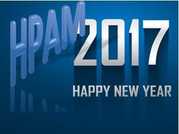 HPAM stands for Holistic Physical Asset Management - another one of those acronyms! Physical Asset Management- An Organizational Challenge is the title of my first book published October 2016 by FriesenPress. There are two main reasons why I wrote a book specifically with this title:
Having worked in a few countries in both the public and private sectors, in different industries and most importantly in different functional areas I have experienced first-hand how physical assets are managed from different perspectives. Over the years I have seen how organizations struggle with the conflicting priorities inherent in managing physical assets to balance cost, performance and risk. It is time to reach out to all the asset management practitioners including the maintenance & reliability professionals, and everyone else in the organization who deals with physical assets in one way or the other – to the project manager who delivers capital projects, to the operator who operates the asset, to the decision maker who makes investment decisions, to the financial analyst who prepares the capital budget, to the accountant who put together the physical asset valuation report and to others. It is time we bring everyone together to understand the holistic approach of managing physical assets over their entire lifecycle; to understand how our action/inaction or decision can impact the effectiveness of the process; to understand how working together will make better use of the resources at our disposal, and to understand how harmonization can help make better decisions. In the Year 2017 I will be launching a series of blog posts to share my thoughts and philosophy on HPAM and the organizational challenges as outlined in my book. The goals of the posts will be to:
Stay tuned on LinkedIn and Twitter for updates. Together, we can drive the change needed in organizations to create the required synergy and harmonization. In the meantime the question I have for you is: How can you help your organization with the HPAM philosophy irrespective of your job function? |
FollowAuthorDharmen Dhaliah, P.Eng, MBA, PMP, CAMA, MMP, CMRP Archives
October 2021
Categories |

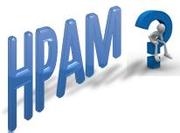
 RSS Feed
RSS Feed